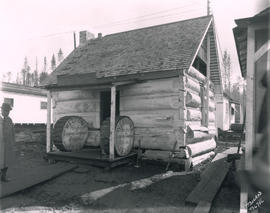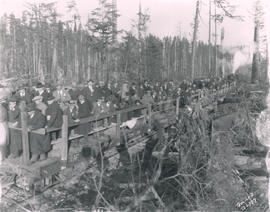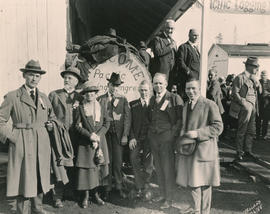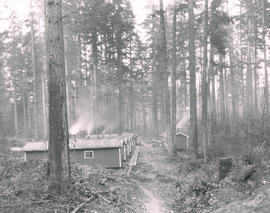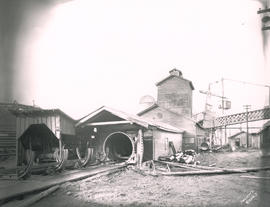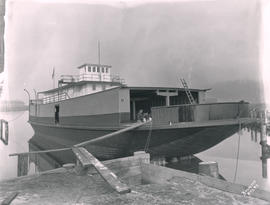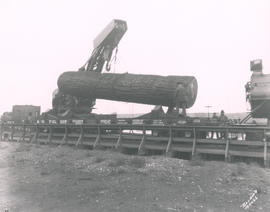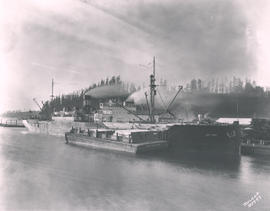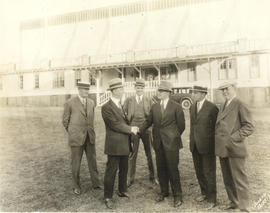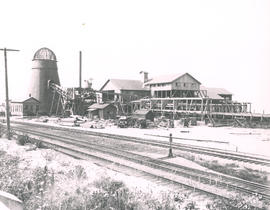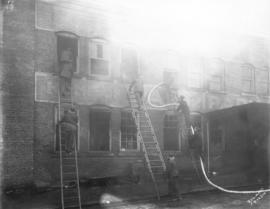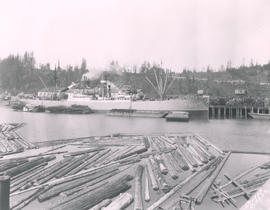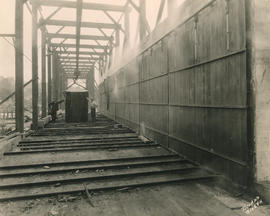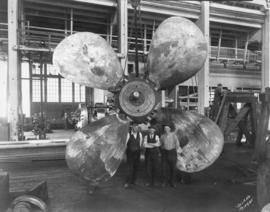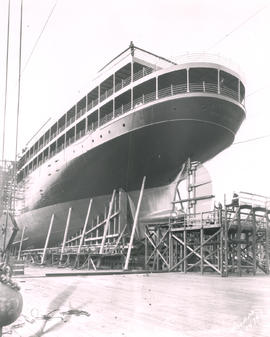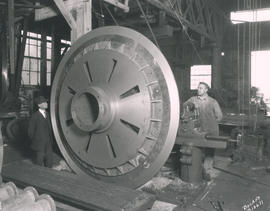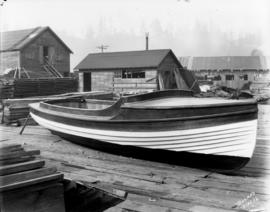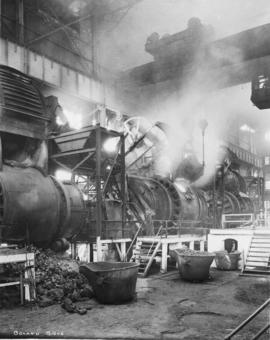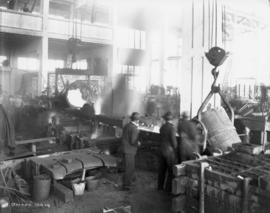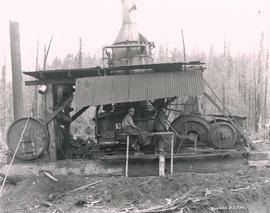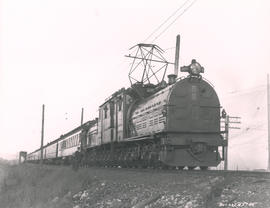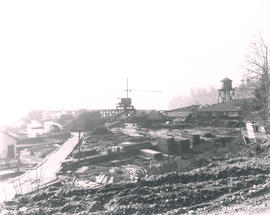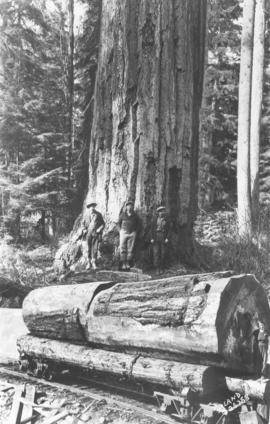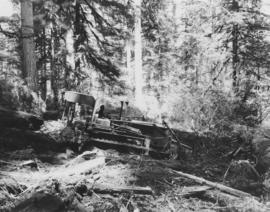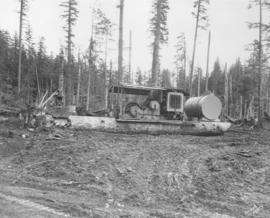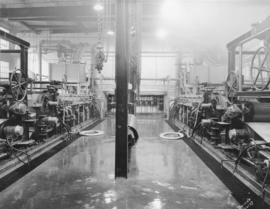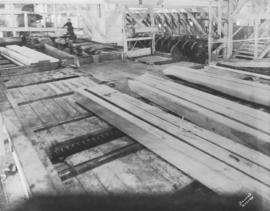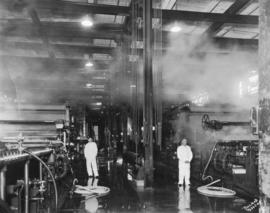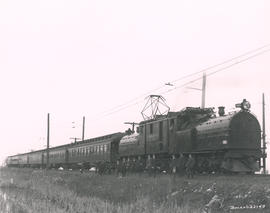- Item
- 1927-08
Part of Marvin Boland Photographs
In August of 1927, this photograph was taken for a brochure advertising the Chicago, Milwaukee and St. Paul Railroad locomotive class EP3, the largest and most powerful electric powered locomotive. The women leaning out of the windows wearing corsages were beauties from the Broadway Theater Review on loan to the railroad for the photograph. The automobile was a new Chrysler Imperial 80 sedan loaned by the American Automobile Association to transport the girls. The new Olympian was the most modern and luxurious transcontinental transportation around. It ran on roller bearings, eliminating lurching jerks on stopping and starting. The Milwaukee Road electrified transcontinental railroad ran from Tacoma & Seattle to Chicago, over 660 miles and across four mountain ranges. TPL-1359; G44.1-092 (TDL 8/7/1927, pg. G-5 alternate picture) (photocopy made for American Automobile on 10-8-27)
Railroad locomotives--Tacoma; Railroad cars--Tacoma; Railroads--Tacoma; Chrysler automobile; Chicago, Milwaukee & St. Paul Railroad Co. (Tacoma);

